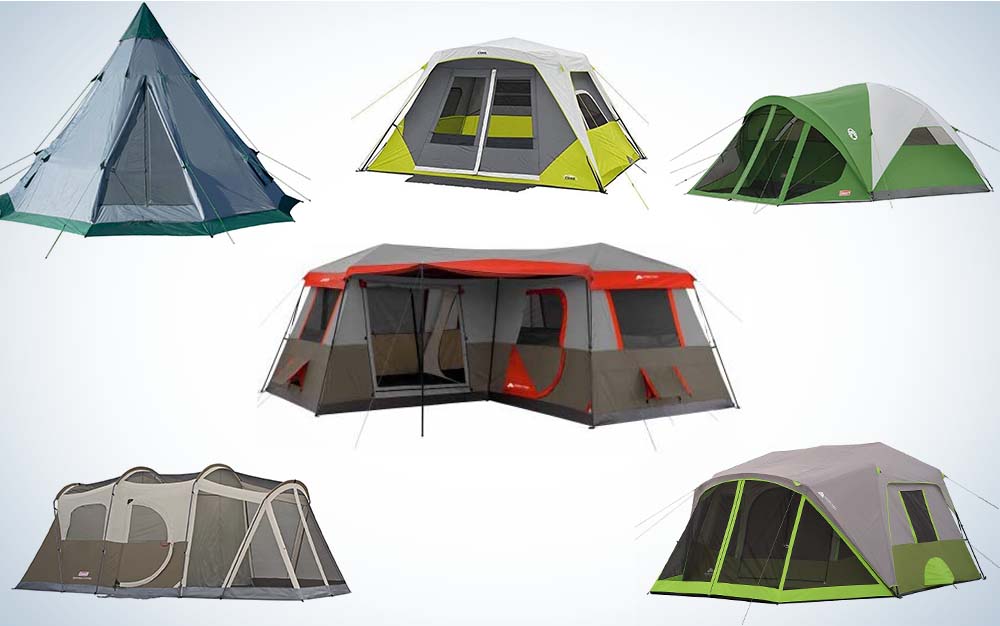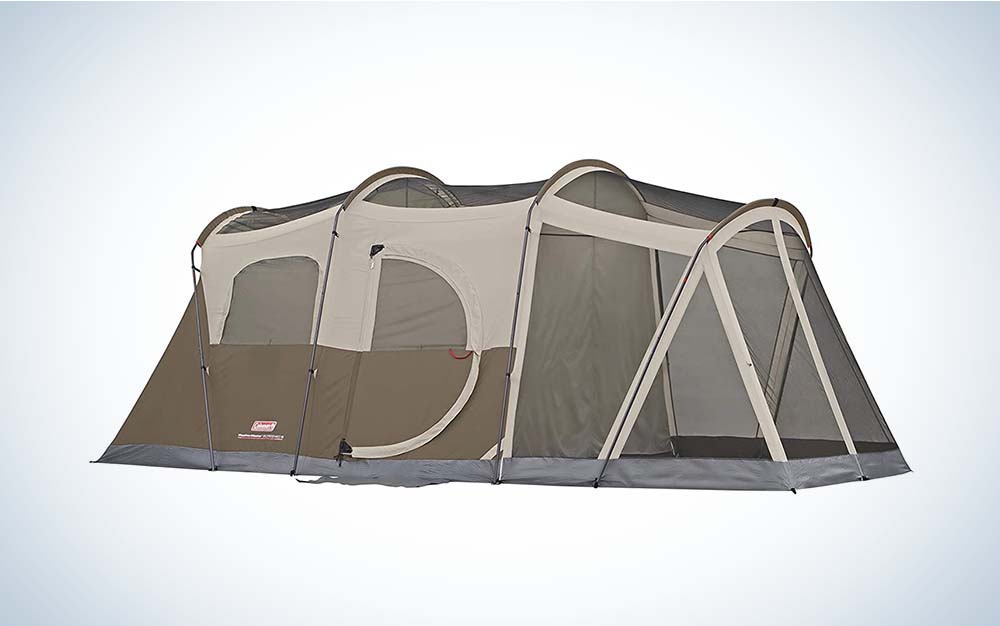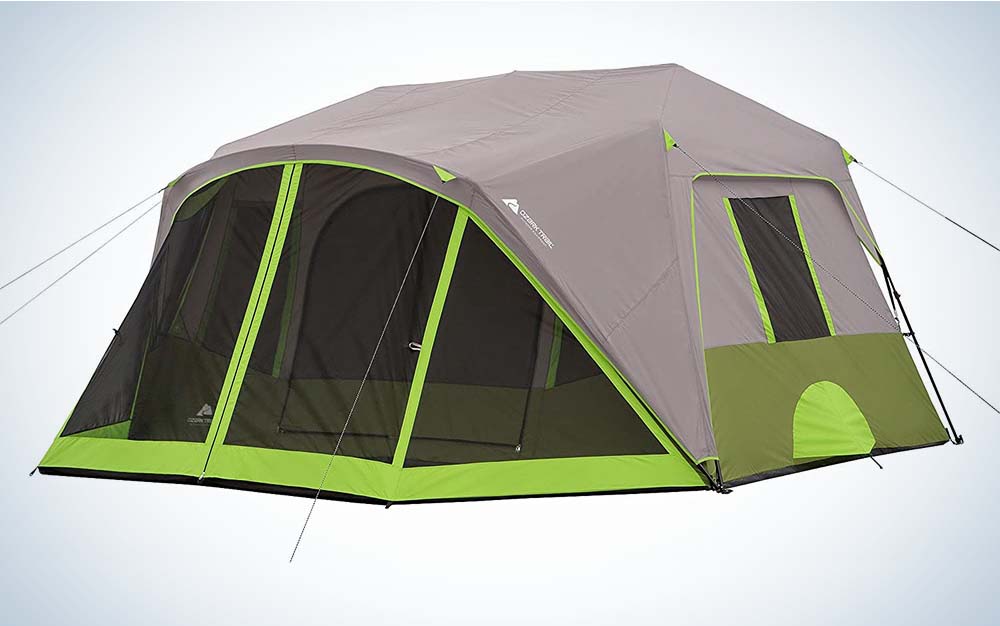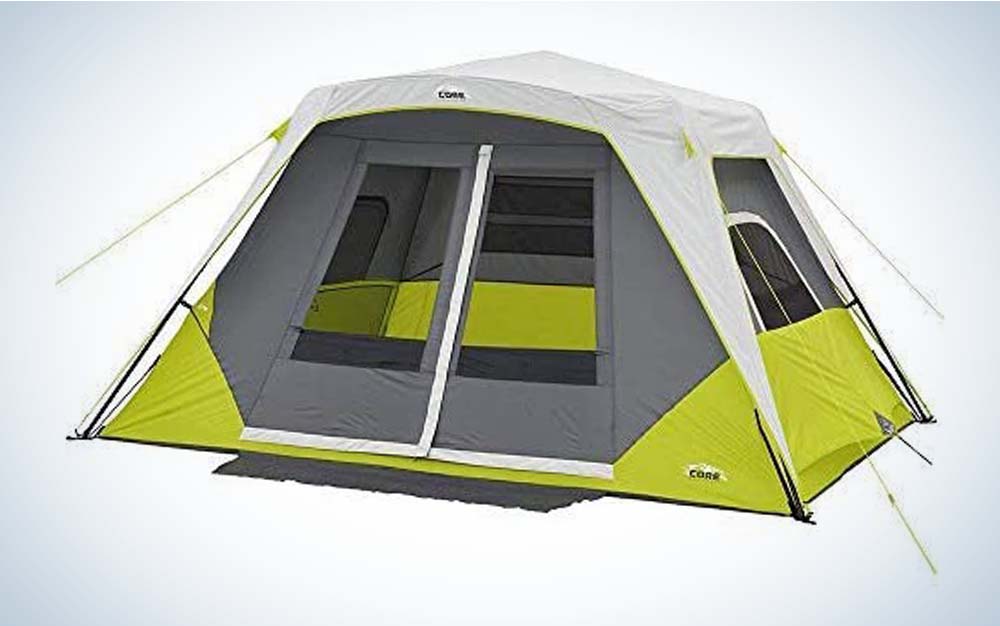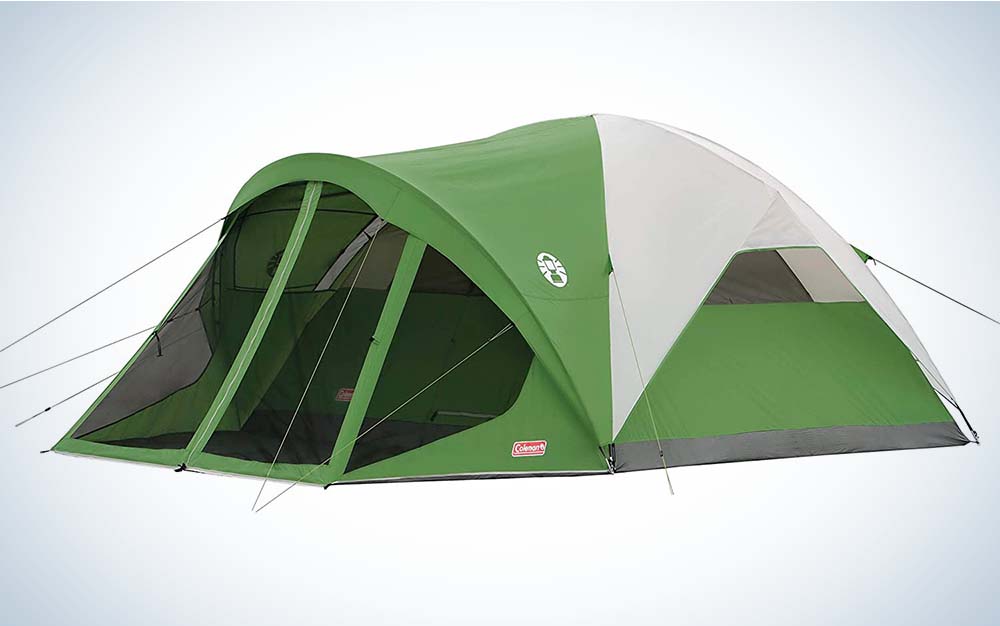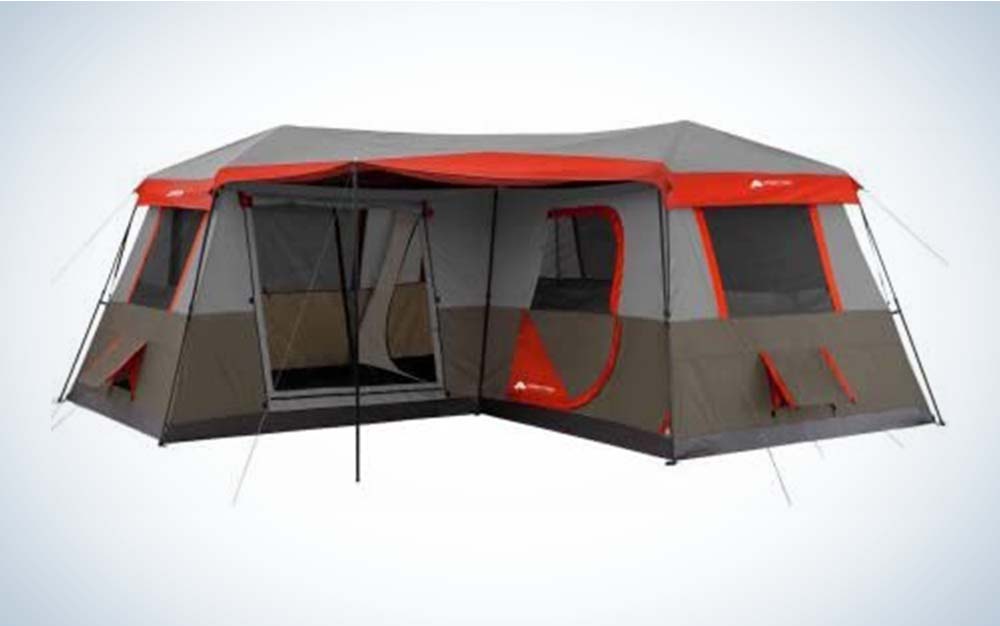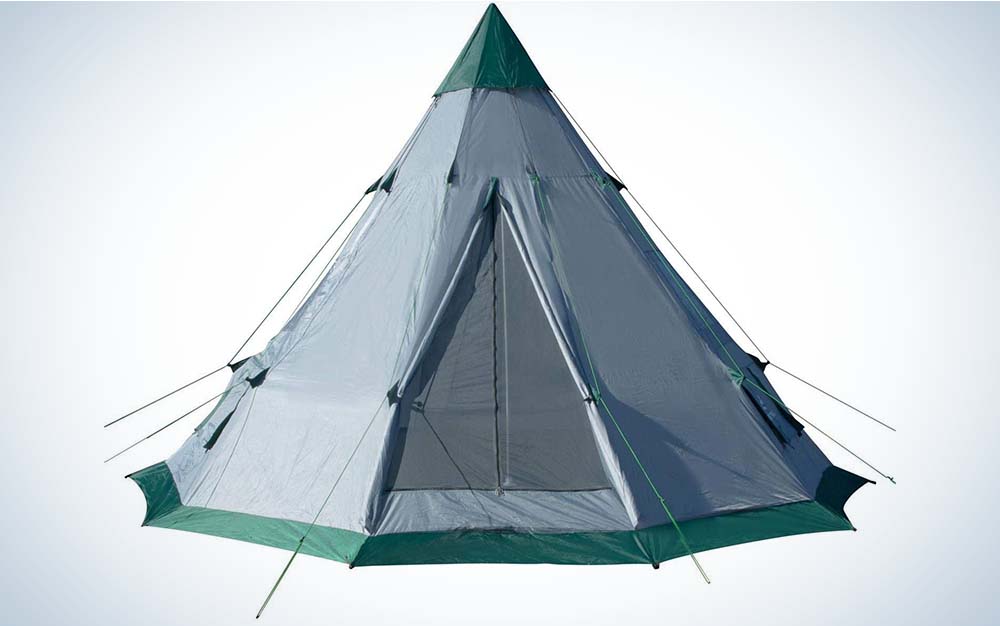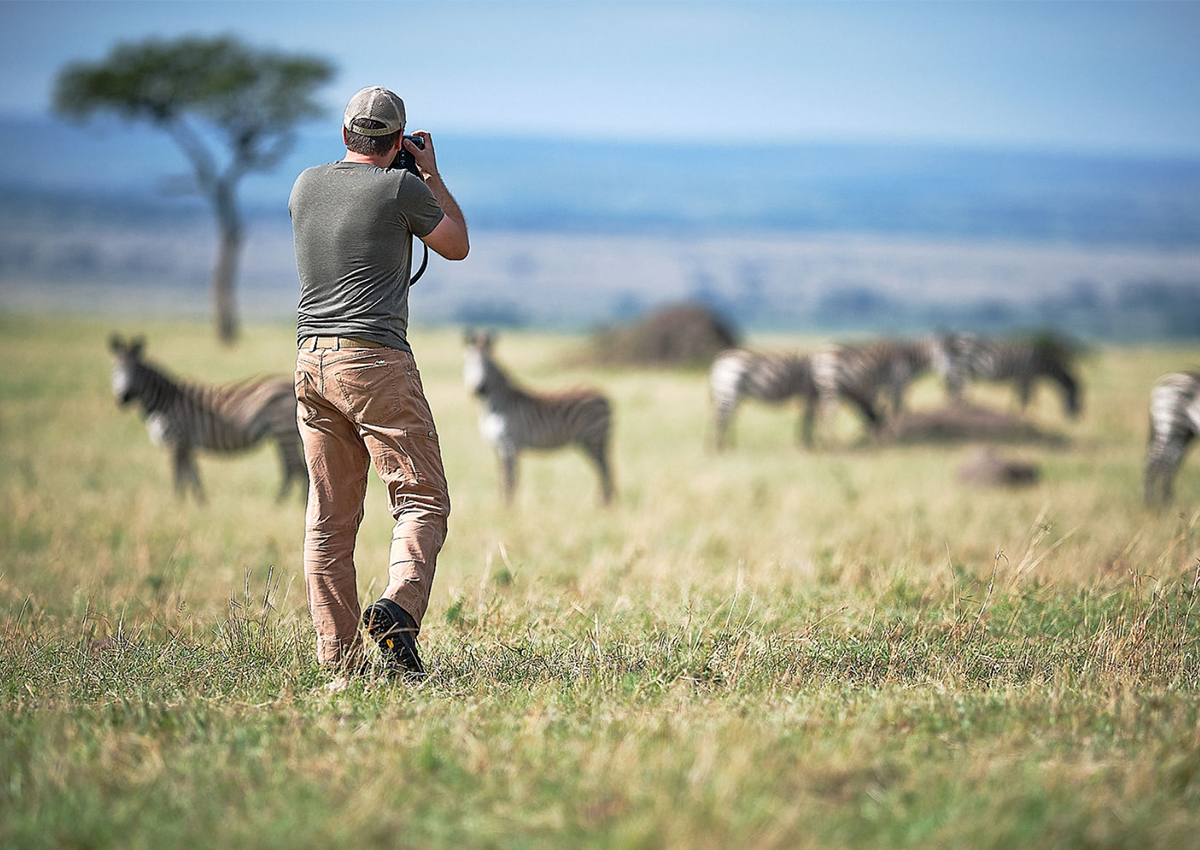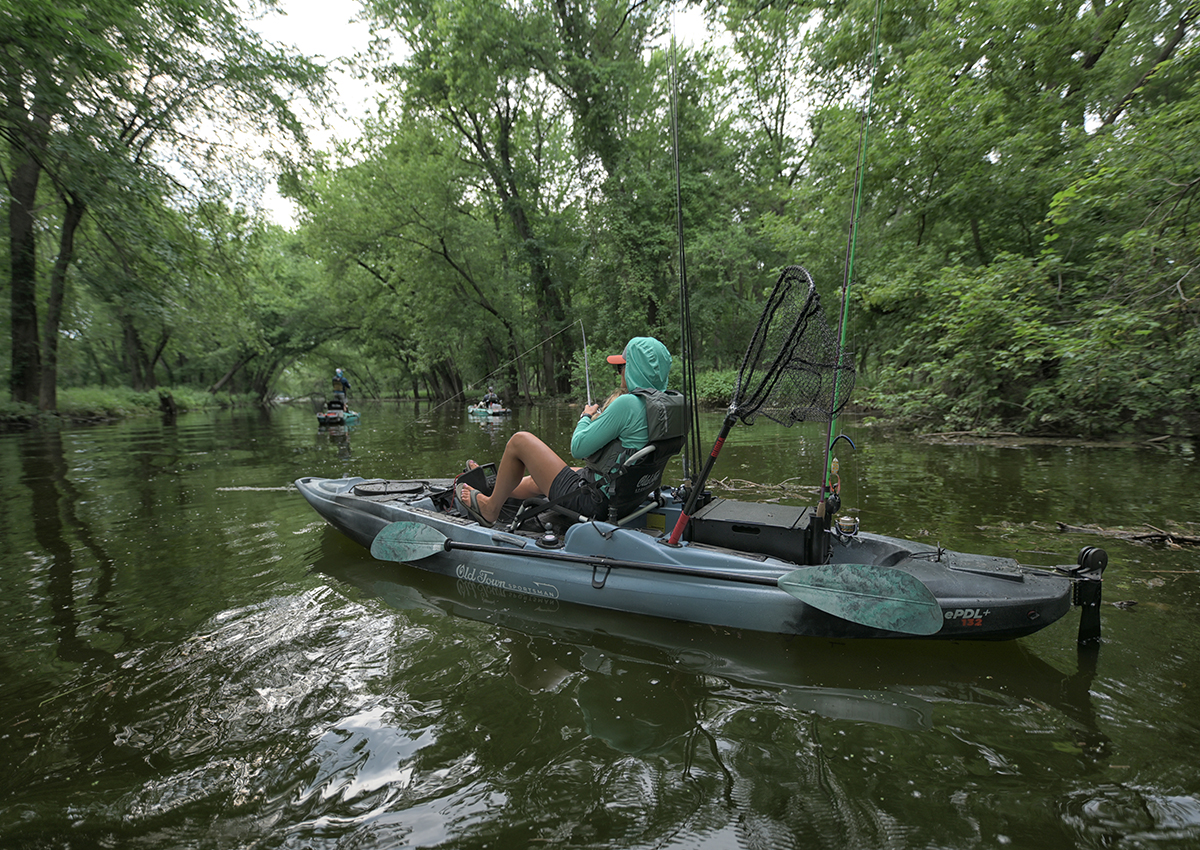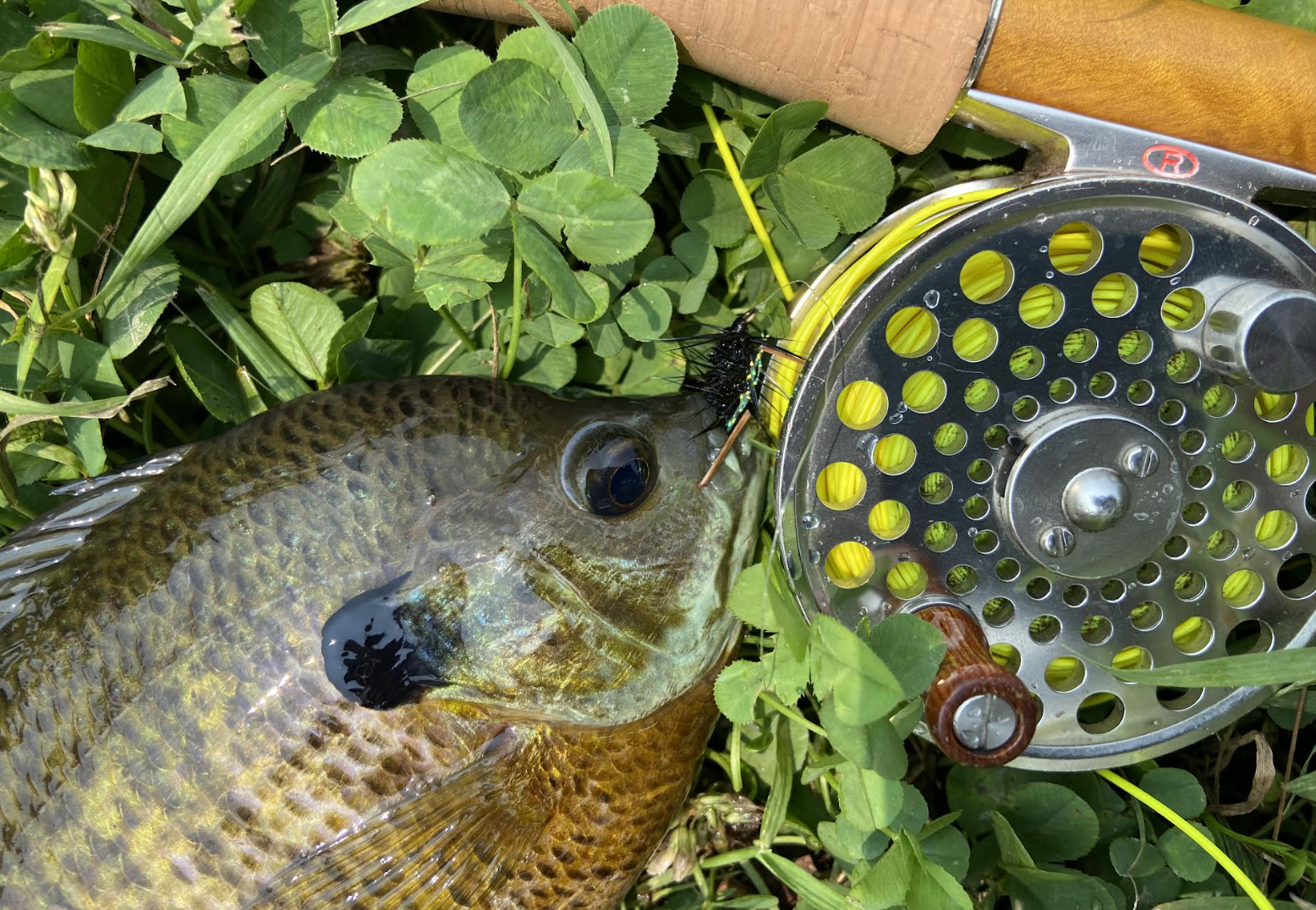| Best Overall |
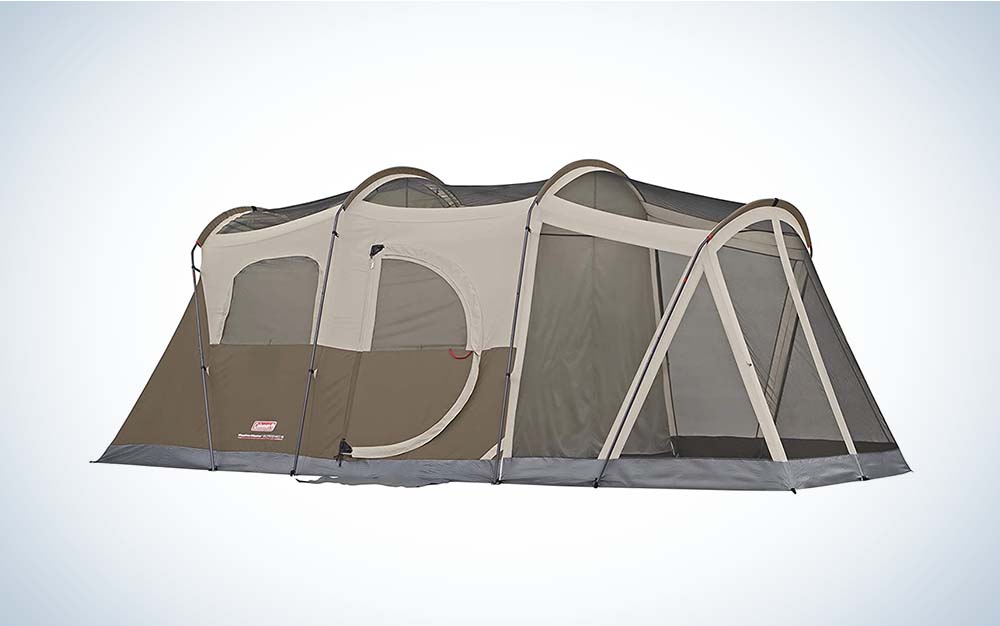
|
Coleman WeatherMaster 6-person Tent with Screen Room | SEE IT |
LEARN MORE
|
Summary
This family fortress is easy to set up and can brave inclement weather |
| Best for Easy Setup |
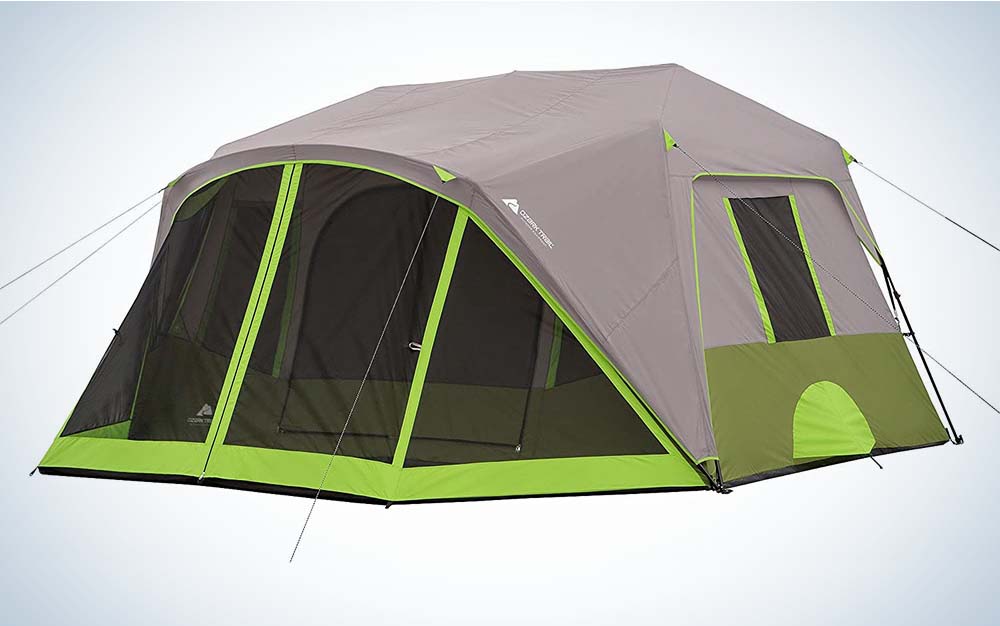
|
Ozark Trail 9-person Instant Camping Tent | SEE IT |
LEARN MORE
|
Summary
This tent is designed to be set up in two minutes |
| Best for Big Families |
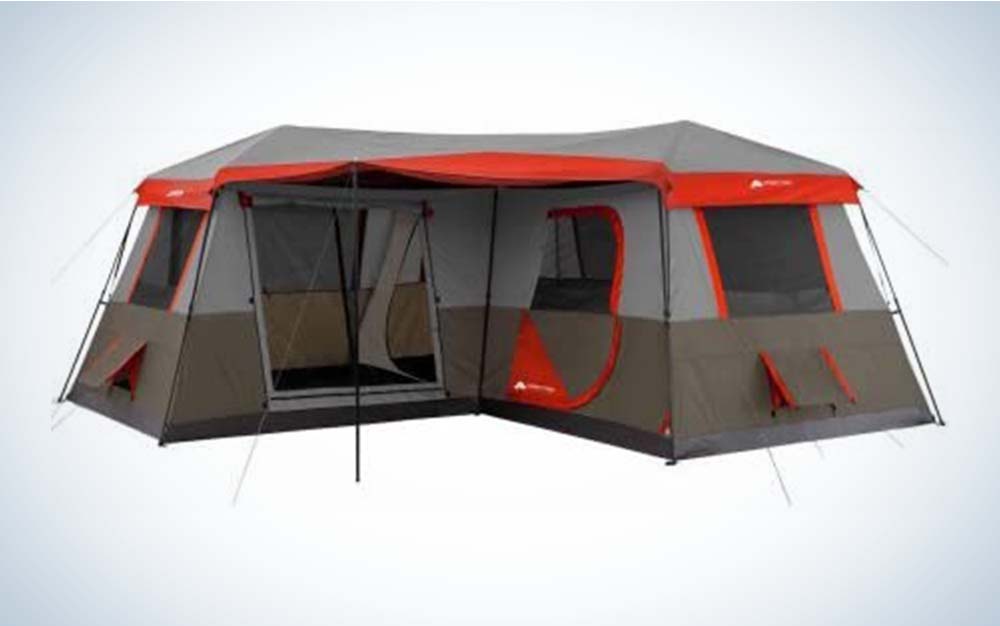
|
Ozark Trail 3-Room Instant Cabin Tent | SEE IT |
LEARN MORE
|
Summary
This L-shaped tent has removable walls — perfect for a large family or groups who want privacy |
We may earn revenue from the products available on this page and participate in affiliate programs. Learn More ›
The key with any family camping trip, is comfort — and comfort begins with a reliable tent. But with so many tent designs, tent materials, and tent features available, it can be tough to know which tent is the best value. To help, here is a list of the best family tents that are dependable, as well as affordable to consider before heading out to start your camping season — whether it’s in some remote corner of the woods, or in your own backyard.
- Best Overall: Coleman WeatherMaster 6-person Tent with Screen Room
- Best for Easy Setup: Ozark Trail 9-person Instant Camping Tent
- Best Family Tent for Ventilation: CORE 6-Person Instant Cabin Tent
- Best Family Tent with Screen Room: Coleman Dome Tent with Screen Room
- Best Tent for Big Families: Ozark Trail 3-Room Instant Cabin Tent
- Best Family Tent for Fun: Winterial 6-7 Person Teepee Tent
Best Family Tent: Coleman WeatherMaster 6-person Tent with Screen Room
Key Features
- Interior: Large enough to accommodate two queen-sized air mattresses
- Footprint: 11×9 feet; 6-foot, 8-inches of headroom
- Construction: Built for four-season comfort
Why it Made the Cut
The WeatherMaster models from Coleman have several creature-comfort features incorporated into the design that any family will appreciate in the field, without going over budget.
Pros and Cons
Pros
- Welded fabric seams to keep moisture out
- Separate floorless screen room
- Hinged door for easy entry and exit
Cons
- Carry weight
- Setup time
- Small rainfly
Product Description
When it comes to the best family tent overall and camping gear in general, Coleman has been one of the most reputable names in the business for a very, very long time. So, it shouldn’t be any surprise they’re able to evaluate tent designs from years past, weed out what worked from what didn’t, and design a family fortress that’s easy to set up. This tent is also steadfast in heavy winds and resilient to even the heaviest rains, all while providing enough room for a small family. It also comes with the perfect porch for watching lightning bugs light up the sky without having to fight off mosquitoes.
Like most family-sized tents, the WeatherMaster is too heavy and bulky to pack off the grid for any great distances. But for the family setting up camp near the tailgate of a truck, it’s ideal.
Best Instant Tent for Families: Ozark Trail 9-person Instant Camping Tent
Key Features
- Interior: Large enough to accommodate seven or more adults
- Footprint: 14×13.5 feet; 7-feet of headroom
- Construction: Polyester fabric and alloy steel poles
Why it Made the Cut
The poles on this tent are pre-attached to the fabric and spring loaded to open like an umbrella, making a two-minute setup time a genuine reality.
Pros and Cons
Pros
- Easy to assemble and disassemble
- Electrical cord ports
- Removable wall divider
Cons
- Carry weight (40 pounds) and size
- No floor under screen porch
- Small rainfly
Product Description
You’ve already packed coolers with food and beverages, loaded bags with clothes and gear, filled your vehicle with gas, and hit the road. So, when you finally arrive at your campsite, the last thing you want to do is work harder than you have to. That’s where Ozark’s Instant Tents come in handy. One of the best instant tents for families, this model large enough to house several adults. Plus, the poles are integrated into the fabric, so all you need to do is spread it out and pop it open like an umbrella on a rainy day. Anchor the corners with stakes and tie off the rainfly and you’re done. What’s more, there’s even a removable wall that divides the space inside in case a camper requires privacy. The integrated pole system makes setup simple and easy but be careful not to bend or break any as they are difficult (if not impossible) to replace.
Best Family Tent for Ventilation: CORE 6-Person Instant Cabin Tent
Key Features
- Interior: Accommodates two queen-sized air mattresses
- Footprint: 11×9 feet; 9-feet of headroom
- Construction: Heat-sealed seams to repel moisture
Why it Made the Cut
The CORE Instant Cabin packs a lot of features into a traditional, square-shaped design that can help campers stay organized, and there are mesh screens on every wall and the ceiling for maximum ventilation.
Pros and Cons
Pros
- Large front door and awning
- Interior hanging wall organizers
- Durable, water-repellent fabric
Cons
- Small rainfly
- Weak zippers
- Not suited for cold or windy conditions
Product Description
Camping isn’t comfortable if you’re forced to spend the night in a warm, humid, unventilated shelter. That won’t happen with the CORE 6-person Instant Cabin tent. Not only does this model the best family tent for ventilation, it also has screens on all four walls and the ceiling. Other features include an oversized adjustable vent system along the floor so you can draw cool air from the ground into the tent while the warm air filters through the mesh ceiling. While you might not want to use it on the fringes of the camping season, it’s ideal for those hot summer nights when other adventurers are sweating in their sleeping bags. The poles are integrated into the tent fabric which makes setup simple and easy, and the size and number of mesh screens keep the interior fresh and cool.
Best Family Tent with Screen Room: Coleman Dome Tent with Screen Room
Key Features
- Interior: Large enough for two queen-sized air beds
- Footprint: 10×9 feet; 5-feet, 8-inches of headroom
- Construction: Welded corners and inverted seam
Why it Made the Cut
Coleman was able to include some of the features it includes in its high-end tents, like heat-sealed seams and a mesh screen porch, without attaching a heavy price tag.
Pros and Cons
Pros
- Full porch floor
- Window awnings on the rainfly
- Interior storage pockets
Cons
- Weak stress points
- Fragile poles
- Thin material
Product Description
The Coleman Dome is perfectly suited for anyone who’s camping on a budget. This is the best family tent with a screen room because It’s large enough to shelter several people, and because the screen porch has a polyester floor, you can keep boots and gear outside, leaving more room to rest and relax inside. Setup is quick and easy, and its small pack size makes it ideal for quick, car-camping adventures, or for storing in someone’s “emergency box” in the back of a pickup truck. Be aware that the rain fly does not cover the screen porch, so know that wind and rain can penetrate and soak whatever you’re storing outside the tent’s front door.
Best 6 Person Tent: Ozark Trail 3-Room Instant Cabin Tent
Key Features
- Interior: Accommodates two queen-sized air mattresses
- Footprint: 16×16 feet; 6-feet, 10-inches of headroom
- Construction: Free-standing frame design with welded 6-inch tub floor
Why it Made the Cut
Whether your family is especially large, or you just want to cram friends or relatives into one sleeping space, this tent can accommodate. Its L-shaped footprint makes it easy for campers to spread out, and the removable walls ensure everyone has their own private space.
Pros and Cons
Pros
- Pre-attached tent poles
- Electrical cord ports
- Ground-level air vents
Cons
- Carry weight (55 pounds)
- Poor rain fly design
- Weak fabric
Product Description
The Ozark Instant Cabin is for the camper that lives by the motto, “Go big, or go home.” And the Ozark is just that: big. Designed for large family functions or those times when one tent for all is better than several tents strewn about, this model can house up to 12 people in three separate rooms (separated by removable dividers). Like so many other Ozark tent models, the extendable poles are already attached to the tent, and the entire structure can be standing in just a few minutes. There are several storage pockets, seven screened windows for ventilation, and an awning large enough to keep both entry doors under shade.
This model is the best 6 person tent if you need to house several people under one roof. However, because it is so large, it’s a magnet for wind, and isn’t rock steady against high gusts.
Most Spacious: Winterial 6-7 Person Teepee Tent
Key Features
- Interior: 10-foot diameter
- Footprint: 12×12 feet
- Construction: Waterproof 210T polyester
Why it Made the Cut
This model is a terrific solution for those times when you need space for your gear, plenty of headroom up above, and something that’s easy to set up and take down.
Pros and Cons
Pros
- Relatively lightweight (15 pounds)
- Waterproof stitching
- Easy setup
Cons:
- No insect netting
- Thin material
- No interior storage compartments
Product Description
The great thing about teepees is their simple design; you can create a large footprint with a lot of headroom with a single pole and fabric. This model has enough sleeping space for several people, or, sleeping space for just a few and storage space for gear. The material is built to withstand the elements. However, there is no screen or wood-stove port at the top, so don’t be surprised if bugs creep in, and plan for an alternative (and safe) source of heat on those cold nights. Beyond that, let’s just be honest: camping in a teepee is fun, especially for young adventurers: even if it’s only in their own backyard. While advertised as a four-season tent, the thin fabric and lightweight center pole make this model better suited for spring, summer, and early fall conditions.
Final Thoughts
I’ve hunted and fished all across the backcountry in the West, but one of my favorite ways to connect with my inner Clark Griswold is to pack up the family and scoot down the highway to find reprieve in the form of a polyester dome shelter, a campfire, and the messiest s’mores on Earth. In fact, years ago, we started a tradition of heading out on a camping trip the day after the last day of school; it’s our way of officially kicking off summer. Last year we visited Idaho’s Sawtooth Mountains. This year, we’re exploring the rivers and lakes around Bend, Oregon. If you’re headed out for your adventure, bring along one of my tested and approved options for the best family tent.
Methodology
To make my list of the best family tents, I first defined a “family tent” to be a portable shelter that could house six or more people (there are many smaller tents on the market if your family only has three or four campers). From there, I focused on the following key components of each tent:
- Materials: Are the poles, fly, and fabric made of durable material?
- Construction: Is the tent built to stand up to bad weather?
- Pack weight: Is the tent light enough to be easily transported?
- Features: Does the tent have interior pockets, vestibules, ect.?
- Overall design: Is the tent designed to accommodate a family (multiple rooms and plenty of space)?
- Ease of Setup: Can the tent be set up relatively easily by one or two people?
Things to Consider Before Buying a Family Tent
Owning the right (or wrong) family tent can make or break an adventure. Toting something too small or poorly constructed can make any adventure a nightmare, whereas lugging around something too large and bulky, or difficult to set up, is just as frustrating.
Start by zeroing in on exactly how large a tent you need. If you have a small family, and a fair amount of gear, a six-person model might be all that you need. The nice thing is smaller tents are generally less expensive than much larger models, so try to use that extra savings to make sure your shelter has features — like welded seams, waterproof fabric, and heavy-duty zippers — that will make life easier outdoors.
If something larger is in your future, still put a heavy emphasis on things like materials and construction, but also remember the larger the dwelling, the more cumbersome it becomes to transport from place to place. And, speaking of “place,” think about where you’re going to camp before you buy. Some areas might not have spaces large enough, or flat enough, to accommodate extra-large footprints.
Read Next: Five Things to Consider Before Buying an Extra-Large Tent
FAQs
Answers to the most-asked questions when searching for a family tent.
Q: How important is a rainfly?
While nearly every tent comes with a rainfly, most only cover the very top portion of the shelter and don’t do much to keep wind and moisture from penetrating through windows or porch screens. If you want 100 percent coverage, get a tent with a rainfly that reaches completely to the ground, all the way around the tent.
Q: How important is inside storage?
Getting settled inside a tent doesn’t just mean unrolling a sleeping bag where you plan to catch some Zzzs. It also means keeping essential items like flashlights, water, eyeglasses, and other things within easy reach. Consider where people will sleep and stash gear in relation to the storage spaces and pockets incorporated into the tent, as well as other creature comforts like where you might hand an LED lantern to illuminate the inside at night.
Q: Should I worry about tent shape?
There are pros and cons to every tent design. A traditional, straight-walled cabin-style shelter can offer a lot of interior room and headspace, but the flat walls act like sails in strong winds. A dome-style tent isn’t as susceptible to wind, but doesn’t offer as much headspace or room to roam. Whichever style you choose, make sure the poles and materials are built to handle conditions you might encounter, and don’t be afraid to invest in additional, extra-long, heavy-duty ground stakes to keep it secure
Outdoor Life Values
Outdoor Life editors don’t just enjoy hunting and fishing as hobbies—the pursuit of these passions make us who we are. Our writers are diehard outdoorsmen and women, too. For more than a century, OL has been evaluating the latest and greatest outdoor gear and providing our readers with no-B.S. reviews. We test products in the field under real-world conditions. We write about the pros and cons of every product we review so that you know exactly what you’re getting if you decide to purchase the gear we cover. Only the best hunting, fishing, backpacking, camping, and survival gear will make the cut in our reviews and roundups. If we’re covering it, you know it’s legit.
